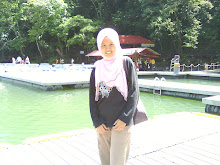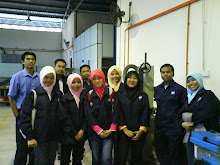Sunday, March 30, 2008
Saturday, March 29, 2008
>>>MeCHaTRoNiCs eNGiNeeRiNg<<<
Mechatronics is centred on mechanics, electronics, control engineering, computing, molecular engineering (from nanochemistry and biology) which, combined, make possible the generation of simpler, more economical, reliable and versatile systems. The portmanteau "Mechatronics" was first coined by Mr. Tetsuro Mori, a senior engineer of the Japanese company Yaskawa, in 1969. Mechatronics may alternatively be referred to as "electromechanical systems" or less often as "control and automation engineering".Engineering cybernetics deals with the question of control engineering of mechatronic systems. It is used to control or regulate such a system (see control theory). Through collaboration the mechatronic modules perform the production goals and inherit flexible and agile manufacturing properties in the production scheme. Modern production equipment consists of mechatronic modules that are integrated according to a control architecture. The most known architectures involve hierarchy, polyarchy, hetaerachy (often mispelled as heterarchy) and hybrid. The methods for achieving a technical effect are described by control algorithms, which may or may not utilize formal methods in their design. Hybrid-systems important to Mechatronics include production systems, synergy drives, planetary exploration rovers, automotive subsystems such as anti-lock braking systems, spin-assist and every day equipment such as autofocus cameras, video, hard disks, CD-players, washing machines.A typical mechatronic engineering degree would involve classes in engineering mathematics, mechanics, machine component design, mechanical design, thermodynamics, circuits and systems, electronics and communications, control theory, programming, digital signal processing, power engineering, robotics and usually a final year thesis
Posted by QuRraTU_AUniE at 11:09 PM 0 comments
>>AbOUt rObOtIcS<<
The robotics course is a part of a professional higher undergraduate education program of electrical engineering, mechatronic engineering and science computer. The course is fully supported by a belonging web page with
address:http://www.ro.feri.unimb.si/predmeti/robotika_2/welcome.html, as it was described in the previous chapter. The material given on web page coyers the laboratory sessions and the lecture sessions. As the robotics is rapidly evolving field, the content of the course is being refreshed and complemented each year, so this approach is especially suitable. The course topics are kinematics, direct and inverse robot dynamics, sensors and actuators in robotics, robot control and real time implementation issues. First part of course consists of lectures, which present the student the basic problems and give them some theoretical background. The second part consist of demonstration exercises and laboratory exercises. The is a lot of practical work using modern equipment;similar to the one the students will most likely work with in their future jobs. The course requires the knowledge from many different fields including mathemathics, physics, control system, programming and others. Students have attended one year course of physics, so they are familiar with the basic concepts of the forces, torques, moment of inertia and Newton’s Law. Then, the student have to attended the programming subject that very important in this course. This is because to make sure the student familiar with the programming and understand to decorated their own program. Student need to set up the program and make all the part of robot can connect with each other in this program. The other part in this course is about control system. In this part, student have to know how to control the system. As usual, we use the specific sensor to detect data and sent it to the control system for the feedback. Lastly, students need to expert in measured the measurement is important in this course because without it, the operation of system is failed. This is because the measurement and control system is connected to each other.
address:http://www.ro.feri.unimb.si/predmeti/robotika_2/welcome.html, as it was described in the previous chapter. The material given on web page coyers the laboratory sessions and the lecture sessions. As the robotics is rapidly evolving field, the content of the course is being refreshed and complemented each year, so this approach is especially suitable. The course topics are kinematics, direct and inverse robot dynamics, sensors and actuators in robotics, robot control and real time implementation issues. First part of course consists of lectures, which present the student the basic problems and give them some theoretical background. The second part consist of demonstration exercises and laboratory exercises. The is a lot of practical work using modern equipment;similar to the one the students will most likely work with in their future jobs. The course requires the knowledge from many different fields including mathemathics, physics, control system, programming and others. Students have attended one year course of physics, so they are familiar with the basic concepts of the forces, torques, moment of inertia and Newton’s Law. Then, the student have to attended the programming subject that very important in this course. This is because to make sure the student familiar with the programming and understand to decorated their own program. Student need to set up the program and make all the part of robot can connect with each other in this program. The other part in this course is about control system. In this part, student have to know how to control the system. As usual, we use the specific sensor to detect data and sent it to the control system for the feedback. Lastly, students need to expert in measured the measurement is important in this course because without it, the operation of system is failed. This is because the measurement and control system is connected to each other.
Posted by QuRraTU_AUniE at 4:37 PM 0 comments
>>>AN ICT APPLICATION IN EDUCATION<<<


The course employed ICT in a number of different ways. The introductory part of the course was held in a specially designed video-conferencing
facility that had a range of ICT capabilities. The design of the room is
critiqued as is the use that was made of it. Throughout the paper the authors
emphasize the point that ICT is a powerful tool for teaching and learning but
failure to plan, deliver and assess ICT-based courses on sound pedagogicalgrounds merely means that poor teaching and learning practices are disseminated more widely and more quickly. On the basis of our evaluation we propose a simple set of questions that can be used to evaluate the best use of ICT in engineering education.
A last time ago the use of computers as a teaching and learning tool was limited. Teachers used personal computers (PCs) to prepare or store lecture notes, create databases for exam questions or keep up with administrative matters that were formerly handled by a faculty secretary. As with many other inventions the PC looked, and was used like, the thing it had replaced—the electric typewriter. In university settings, and particularly in the humanities, it became a sophisticated word processor. Academics only use a fraction of the modern PC’s capacity. After barely a decade of development the power of the PC is extraordinary. Linked to powerful servers (super computers), the PC has the capacity to send and receive high-quality sound, pictures, diagrams, animations and text. The Internet acts as a clearing house for the data that are generated but also as a potential challenger to older forms of transmitting and developing knowledge and skills. In the West, governments and companies are committing huge amounts of money to digital systems that use bre optic cable. Such systems speed up and improve the quality of Internet access. Because of it, a modest PC coupled to a small camera can do the job of a sophisticated video-conferencing facility. The revolution in PC development and the Internet is matched by related developments in other forms of informationcommunication technology (ICT), including mobile telephones. Besides that, ICT is so powerful that it could transform traditional educational provision. The rapid growth of off-campus courses using this technology is an indication of things to come. ICT will almost certainly create a paradigm shift from institution-based, on-campus, teacher-centred education to learner-centred education, where students using PCs at home. Already these can send and receive text and able to access the Internet.
Posted by QuRraTU_AUniE at 4:04 PM 0 comments
Subscribe to:
Posts (Atom)















